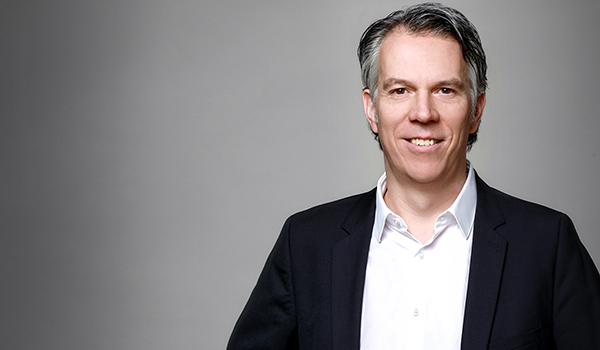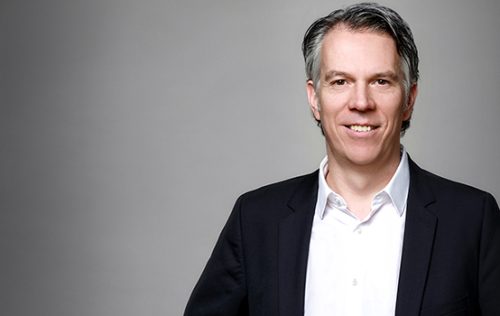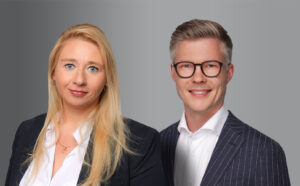
– Project Excellence
Why Agile project management needs bridges
- •
- Sandra Goetz
– ABSTRACT
Agile project organization: Avoiding ticket ping-pong
Kay Kastir and Christopher Schröer López explain how the concept of "The Bridge" introduces a paradigm shift in agile project organization, how silo thinking can be broken down constructively and what helps mitigate so-called ticket ping-pong (the mutual assignment of tasks). According to the project excellence experts at IKOR, the agile project approach is a flexibly applicable, solution-oriented and holistic model. On the one hand, the analogy refers to the command center of a ship. On the other hand, the model also stands for linkage: The Bridge supports multifunctional teams in effectively bringing issues together and jointly developing solutions. To do this, however, teams must communicate clearly and continuously, Kastir and Schröer López explain.
– Fast Lane
In this article you will learn:
- What kind of (Agile) collaboration is necessary and what is impossible.
- What a cross-functional team does and how it is composed.
- Away from pure Scrum methodology: What makes The Bridge's agile approach different.
- How to increase project and product efficiency.
Agility has long been seen as a gamechanger for complex IT projects. What challenges actually prevail in an agile environment?
Kay Kastir: Complex project plans have to be managed over a defined period of time. However, it is not always easy to parse these projects into small, feasible pieces. If classic working methods in particular are mixed within an agile context, the overview can quickly be lost. Nevertheless, the agile approach establishes a different kind of collaboration and communication.
What does that mean exactly - especially for communication?
Kastir: The agile approach is fundamentally accepted. This includes an understanding of processes in the company as well as an agile mindset and the acceptance of wanting to do things differently and learning new approaches. Agility must be lived as a holistic approach across all levels. In an individual team, for example, this means that every employee in the project must take on more personal responsibility. This increases the effort required as it becomes necessary to communicate more - both within the project team and externally. To set up and manage this form of communication, a different way of working together is required.

Kay Kastir
is Senior Manager at IKOR with a focus on project management in the Project Excellence dock."The Bridge is more than a task force, breaking silo thinking and helping to develop efficient solutions"
The soft skills of personal responsibility and communication are considered key qualifications. How do teams make the best use of these in agile project management?
Kastir: Imagine a new software is to be implemented. Towards the end of the project, more and more defects arise, creating error tickets or requirements are changed at short notice. Both regularly lead to an uneven ratio between completed tasks (such as tickets in the project management tool Jira) and still necessary, i.e., new adjustments with usually little time remaining in the project. Because of the high number of new changes, each team tries to implement its relevant tasks as quickly as possible. However, this can lead to silo thinking.
Christopher Schröer López: As a result, it is possible that tickets are assigned to the wrong resource and not processed further. In addition, teams often rely on input from third parties when processing a ticket. Tickets are often assigned to one another without the team members communicating directly with each other. We call this effect "ticket ping-pong." This represents a challenging situation in the project: Management must not ignore ticket ping-pong, especially since this situation almost always requires a quick solution.
How do teams get a handle on ticket ping-pong?
Kastir: By breaking down silo thinking; the exclusive consideration of "own" subject areas. To do this, we need to build bridges between the individual project roles - another dimension of the metaphor. Only in this way can we bring about simple and rapid communication. A cross-functional team that is in constant exchange must establish clearly delineated responsibilities. IKOR’s leaders maintain the bridge here in terms of communication and organization and also build bridges, we call this approach "The Bridge" - "Die Brücke".
However, I tend to associate hierarchical structures with a command bridge. How does that fit with the agile context?
Kastir: You can definitely see the construct as a command bridge, but without mapping a hierarchical structure. The Bridge acts as a kind of control center and is made up of individual team members. Here, decisions are not made over the heads of the teams. Rather, they exchange and discuss dependencies in The Bridge format. The individual participants then use the key points to work on the content in their teams.
Christopher Schröer López
is Senior Business Consultant with focus on project management in the Project Excellence dock
"Exchange via error tickets increases processing speed and reduces the number of 'hold up' tickets"

How is a team set up in a The Bridge construct?
Schröer López: It's about appropriate representation: Each role should be represented in The Bridge - in our example project, these include a Scrum Master, Test and Defect Manager, Project Management Officer (PMO),Architect and Product Owner. Based on the team composition, the thematic responsibilities are clearly defined. This means that each representative acts as a multiplier for their entire team.
For example, the Scrum Master is a multiplier for all Scrum teams?
Schröer López: Exactly. He or she is responsible for all topics in The Bridge that affect the operational implementation team. They carry topics for discussion from The Bridge to the team and vice versa. Test and Defect Management raises new defect tickets and exchanges information in The Bridge about the current work status of existing defect tickets and test progress. The PMO supports the team in all organizational aspects and thus enables smoother work. The architect estimates the technical feasibility of individual tickets. The product owner gives direction on ticket prioritization and receives all information relevant to him or her through the exchange.
Please give us an example.
Kastir: Imagine an error is identified in the project and classified as a blocker. Instead of assigning it directly to a possible processor, The Bridge first analyses and discusses this bug. The Scrum Master provides information about a possible edit. After all, he oversees and is responsible for the capacities and availabilities of the team. The architect estimates the technical feasibility. Subsequently, the error is assigned to the processor. Additionally, the Scrum Master discusses the next steps with the team member responsible for completion. During the error processing, regular updates are also made for revision in The Bridge.
How do you keep track of things there?
Kastir: One procedure that we have tried and tested successfully involves a fixed daily time slot. This is divided into two phases: We start with a daily meeting where the team presents status reports and current topics from each role. During a subsequent, longer phase, each person works on his or her own topics. This can be compared to a virtual co-working space for project-related discussions: If there is a need for clarification, a question can be addressed and discussed directly in the meeting. Of course, documentation with the help of a task management tool should be utilized. This allows employees to maintain an overview and track updates at a later date.
What does this mean for agile teams? Can they still manage themselves?
Kastir: The team structures are unchanged. The agile approach within the teams remains. After all, The Bridge is made up of representatives from the individual teams. The responsibilities and tasks within the teams stay consistent. In addition, the project participants are free to decide which team member they send to The Bridge. A pre-determined member substitutes in case of absence. As a result, the teams continue to work in their agile structures and additionally receive new impulses and information from The Bridge.
How can performance be improved without causing frustration in the teams and without tickets getting stuck?
Kastir: The Bridge literally builds linkages between teams and enables their representatives to communicate quickly and constantly across teams. In this way, the regular exchange creates transparency. And all representatives are always up to date. In addition, regular collaboration increases the learning effect. This has an impact on performance within The Bridge: Participants get to know the processes outside their area of responsibility better.
Schröer López: And that constantly improves cooperation. Response times to individual issues are shortened. The follow-up steps can be discussed and implemented immediately within the team. At the same time, the team receives impulses from The Bridge - for example, which specifications have priority. The regular exchange of information on error tickets has the positive effect of increasing processing speed and reducing the number of issues that remain unresolved in the form of tickets. In short, there are fewer frictional losses enhancing the team’s ability to concentrate on its core tasks.
In a nutshell, what are the benefits of The Bridge? Which solutions have proven to be particularly effective at IKOR?
Kastir: Cross-dimensional communication works excellently in the agile context if you know how to use it properly. Our approach is flexible - unlike a classic, overarching project meeting. That's why it can be applied in many ways, is solution-oriented and much more than just a task force: The Bridge breaks through silo thinking and helps to develop efficient solutions collaboratively in a multifunctional team. Here, IKOR brings in process-related and organizational experience from various projects and through different project roles. All of this comes into play in The Bridge and makes it easier to form a well-coordinated team and thus lay the foundation for a successful project.
Contact Person

Kay Kastir
Senior Manager
Dock Project Excellence
projectexcellenc@ikor.one
+49 40 8199442-0

Christopher Schröer López
Senior Business Consultant
Dock Project Excellence
projectexcellenc@ikor.one
+49 40 8199442-0





